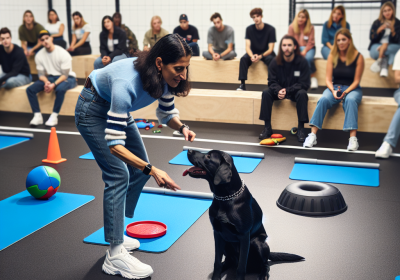Positive Reinforcement Techniques for Canine Freework
Table of Contents
- Benefits Of Positive Reinforcement In Canine Freework
- Effective Positive Reinforcement Strategies For Canine Freework
- Common Mistakes To Avoid In Positive Reinforcement For Canine Freework
Positive reinforcement techniques for canine freework involve using rewards to encourage desired behaviors in dogs during freework activities. Freework, a concept in dog training, allows dogs to explore and interact with their environment freely, promoting mental stimulation and physical exercise. Positive reinforcement, such as treats, praise, or toys, is used to reinforce behaviors that trainers want to see repeated. This approach helps build a strong bond between the dog and the trainer, enhances the dog’s confidence, and encourages a positive learning experience. By consistently rewarding desired behaviors, dogs learn to associate these actions with positive outcomes, making them more likely to repeat them in the future.
Benefits Of Positive Reinforcement In Canine Freework
Positive reinforcement techniques have become increasingly popular in the realm of canine training, particularly in the context of canine freework. This approach, which involves rewarding desired behaviors to encourage their recurrence, offers numerous benefits that extend beyond mere obedience. By focusing on positive reinforcement, trainers can foster a more harmonious relationship between dogs and their handlers, enhance the dogs’ mental and physical well-being, and improve overall training outcomes.
One of the primary advantages of positive reinforcement in canine freework is the establishment of a strong bond between the dog and its handler. When dogs are rewarded for their actions, they begin to associate their handlers with positive experiences. This association builds trust and mutual respect, which are crucial for effective training. Unlike punitive methods, which can instill fear and anxiety, positive reinforcement creates an environment where dogs feel safe and motivated to learn. Consequently, this approach not only enhances the training process but also strengthens the emotional connection between the dog and its handler.
In addition to fostering a strong bond, positive reinforcement techniques contribute significantly to a dog’s mental and physical health. Engaging in freework activities that are rewarded with treats, praise, or play stimulates a dog’s mind and keeps it engaged. This mental stimulation is essential for preventing boredom and reducing the likelihood of behavioral issues such as excessive barking or destructive chewing. Furthermore, the physical activity involved in freework exercises promotes overall fitness and helps maintain a healthy weight, which is vital for a dog’s long-term health.
Moreover, positive reinforcement encourages dogs to think independently and make choices, which is a key aspect of freework. By allowing dogs to explore and experiment with different behaviors, trainers can tap into the dogs’ natural curiosity and problem-solving abilities. This autonomy not only makes training sessions more enjoyable for the dogs but also enhances their cognitive skills. As a result, dogs trained with positive reinforcement are often more adaptable and better equipped to handle new situations or challenges.
Another significant benefit of positive reinforcement in canine freework is the improvement in training outcomes. When dogs are consistently rewarded for desired behaviors, they are more likely to repeat those behaviors in the future. This consistency leads to faster learning and better retention of skills. Additionally, positive reinforcement helps to create a positive training environment where dogs are eager to participate and learn. This enthusiasm can lead to more productive training sessions and quicker progress toward training goals.
Furthermore, positive reinforcement techniques are versatile and can be tailored to suit individual dogs’ needs and preferences. For instance, some dogs may respond better to food rewards, while others may be more motivated by toys or verbal praise. By identifying and utilizing the most effective rewards for each dog, trainers can maximize the effectiveness of their training efforts. This personalized approach ensures that each dog receives the motivation it needs to succeed, leading to more efficient and effective training.
In conclusion, the benefits of positive reinforcement in canine freework are manifold. By fostering a strong bond between dogs and their handlers, promoting mental and physical well-being, encouraging independent thinking, improving training outcomes, and allowing for personalized training approaches, positive reinforcement techniques offer a comprehensive and humane method for training dogs. As more trainers and dog owners recognize these advantages, the adoption of positive reinforcement in canine freework is likely to continue to grow, leading to happier, healthier, and better-trained dogs.
Effective Positive Reinforcement Strategies For Canine Freework
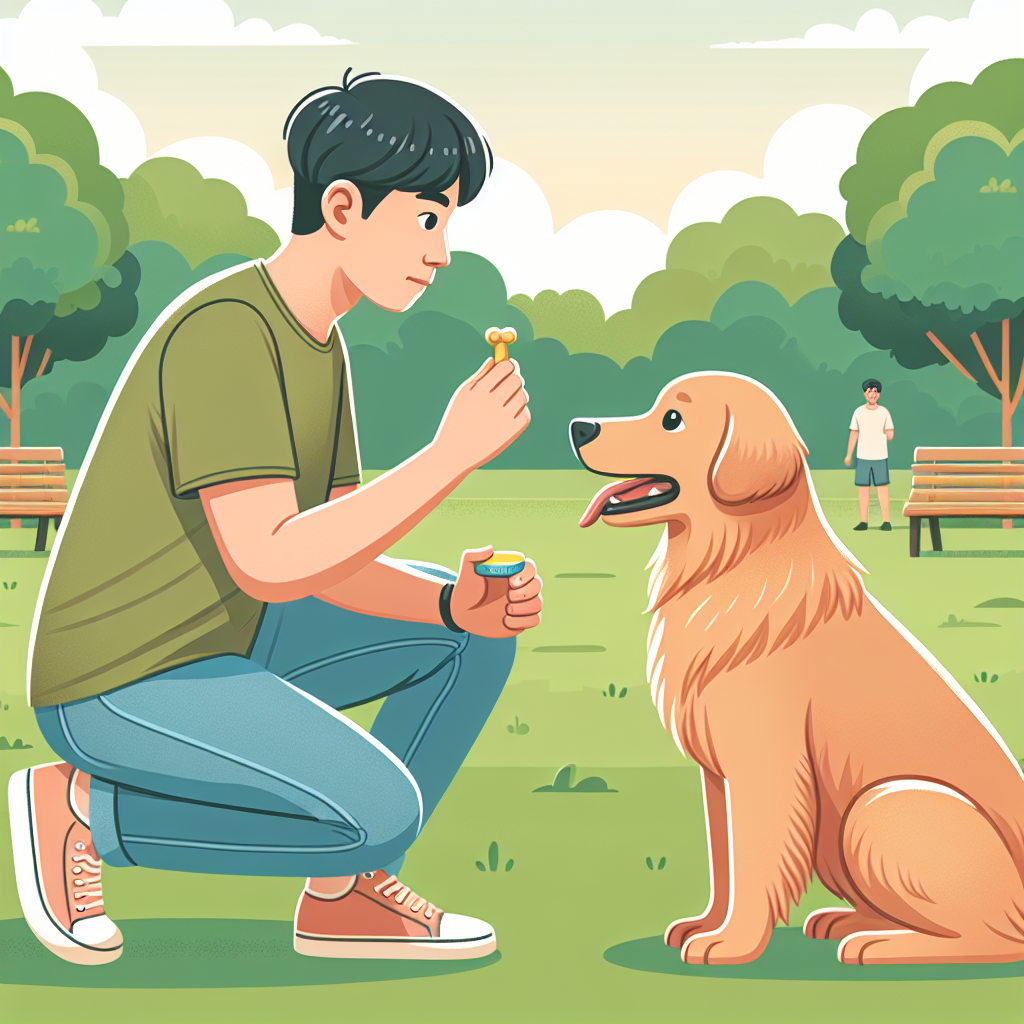
Positive reinforcement techniques are essential in canine freework, a training method that emphasizes the dog’s natural behaviors and instincts. This approach not only enhances the dog’s skills but also strengthens the bond between the dog and its handler. By focusing on rewarding desired behaviors, positive reinforcement creates a conducive learning environment that encourages dogs to engage willingly and enthusiastically in various activities.
One of the most effective positive reinforcement strategies is the use of treats. Treats serve as immediate rewards that can significantly motivate dogs to perform specific tasks. When a dog successfully completes a desired action, offering a treat reinforces that behavior, making it more likely to be repeated in the future. It is crucial, however, to use treats judiciously to avoid overfeeding and to ensure that the dog remains focused on the task at hand. Additionally, varying the type of treats can keep the dog interested and prevent monotony.
In conjunction with treats, verbal praise is another powerful tool in positive reinforcement. Dogs are highly responsive to their handler’s tone of voice, and enthusiastic praise can be incredibly motivating. Phrases like “good job” or “well done” delivered in a cheerful tone can reinforce positive behaviors effectively. Combining verbal praise with treats can create a robust reinforcement system that maximizes the dog’s learning potential.
Moreover, incorporating play into training sessions can be highly beneficial. Play serves as both a reward and a means of building a positive association with training activities. For instance, a brief game of fetch or tug-of-war can be used as a reward for completing a task successfully. This not only reinforces the behavior but also provides the dog with a mental and physical break, making training sessions more enjoyable and less monotonous.
Another important aspect of positive reinforcement in canine freework is the timing of the reward. Immediate reinforcement is crucial because it helps the dog make a clear connection between the behavior and the reward. Delayed rewards can confuse the dog and diminish the effectiveness of the reinforcement. Therefore, handlers must be attentive and quick to reward desired behaviors as soon as they occur.
Consistency is also key in positive reinforcement training. Dogs thrive on routine and predictability, so it is essential to apply reinforcement techniques consistently. This means rewarding the same behaviors in the same manner each time they occur. Inconsistent reinforcement can lead to confusion and hinder the dog’s progress. Establishing a clear and consistent training routine helps the dog understand what is expected and what behaviors will be rewarded.
Furthermore, it is important to gradually phase out treats and other tangible rewards as the dog becomes more proficient in the desired behaviors. This process, known as fading, involves slowly reducing the frequency of treats while maintaining verbal praise and other forms of positive reinforcement. The goal is to ensure that the dog continues to perform the desired behaviors even in the absence of immediate rewards. This transition helps the dog develop intrinsic motivation and a deeper understanding of the tasks.
In conclusion, positive reinforcement techniques are highly effective in canine freework, fostering a positive and productive training environment. By utilizing treats, verbal praise, play, timely rewards, and consistent reinforcement, handlers can enhance their dogs’ skills and strengthen their bond. As the dog progresses, gradually phasing out tangible rewards ensures sustained motivation and long-term success. Through these strategies, positive reinforcement not only improves the dog’s performance but also promotes a harmonious and enjoyable training experience.
Common Mistakes To Avoid In Positive Reinforcement For Canine Freework
Positive reinforcement techniques have become a cornerstone in modern dog training, particularly in the context of canine freework. This method, which involves rewarding desired behaviors to encourage their recurrence, is highly effective when applied correctly. However, there are common mistakes that can undermine its effectiveness, leading to confusion and frustration for both the dog and the handler. Understanding these pitfalls is crucial for anyone looking to optimize their training sessions.
One prevalent mistake is the inconsistency in the application of rewards. Dogs thrive on predictability and clear communication. When rewards are given sporadically or without a clear connection to the desired behavior, the dog may struggle to understand what is being asked of them. This inconsistency can lead to anxiety and a lack of trust in the training process. To avoid this, it is essential to reward the dog immediately and consistently after the desired behavior is exhibited. This helps to create a strong association between the behavior and the reward, reinforcing the behavior more effectively.
Another common error is the overuse of verbal praise without accompanying tangible rewards. While verbal praise can be a powerful tool, it is often not enough on its own, especially in the initial stages of training. Dogs respond more robustly to tangible rewards such as treats, toys, or playtime. As the dog becomes more proficient in the desired behavior, verbal praise can gradually replace tangible rewards, but it should not be the primary form of reinforcement at the outset.
Timing is another critical factor that can significantly impact the success of positive reinforcement. Delayed rewards can confuse the dog, as they may not be able to link the reward to the specific behavior being reinforced. The reward should be given immediately after the desired behavior occurs to ensure a clear connection. This immediacy helps the dog understand exactly what action is being rewarded, thereby increasing the likelihood of the behavior being repeated.
Additionally, it is important to avoid using negative reinforcement or punishment in conjunction with positive reinforcement. Mixing these methods can create a confusing and stressful environment for the dog. Positive reinforcement relies on creating a positive association with the desired behavior, while negative reinforcement or punishment can create fear and anxiety. This can lead to a breakdown in communication and trust between the dog and the handler, ultimately hindering the training process.
Another mistake to be mindful of is the failure to generalize the training to different environments and situations. Dogs may learn to perform a behavior perfectly in a controlled setting but struggle to replicate it in a more distracting environment. To avoid this, it is important to practice the desired behaviors in various settings, gradually increasing the level of distraction. This helps the dog learn to perform the behavior reliably, regardless of the environment.
Lastly, it is crucial to be patient and realistic about the training process. Expecting immediate results can lead to frustration and a tendency to rush the training. Each dog learns at their own pace, and it is important to celebrate small successes along the way. Patience and consistency are key to building a strong foundation of trust and understanding between the dog and the handler.
In conclusion, while positive reinforcement is a highly effective training method for canine freework, it is essential to avoid common mistakes such as inconsistency, overreliance on verbal praise, poor timing, mixing reinforcement methods, failure to generalize training, and impatience. By being mindful of these pitfalls and focusing on clear, consistent communication, handlers can create a positive and productive training environment that fosters learning and strengthens the bond with their canine companions.
Read more about Canine Freework
Training Strategies for Canine Freework
– Positive Reinforcement Techniques for Canine Freework
– Building a Strong Foundation for Canine Freework Training
– Common Training Mistakes to Avoid in Canine Freework
– Adjusting Training Methods for Different Types of Dogs
– Incorporating Canine Freework in Regular Training Sessions



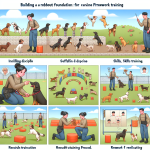
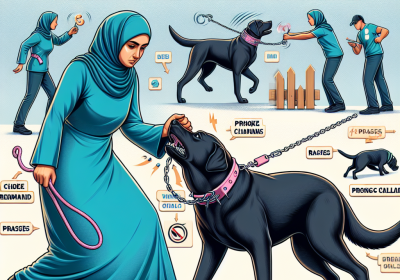
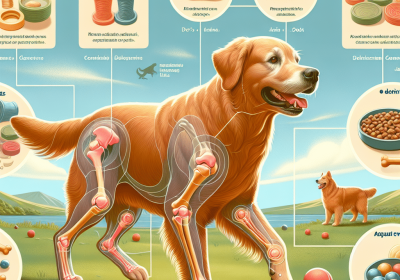
![The Dog Podcast Uncovers Startling Truths About What We Feed Our Dogs [Press Release]](https://knowledgenook.com.au/wp-content/uploads/2024/08/dog-with-nutritious-food-400x280.jpg)
